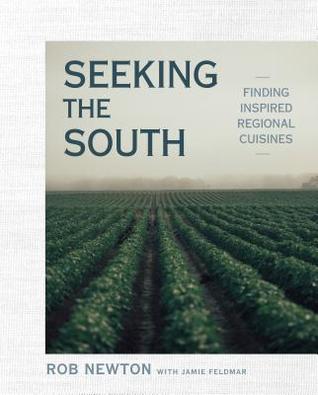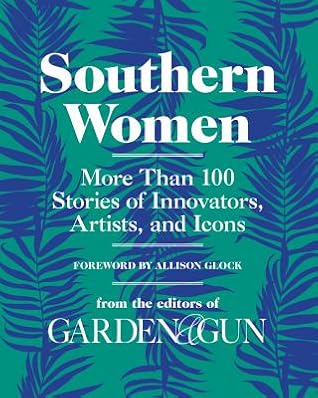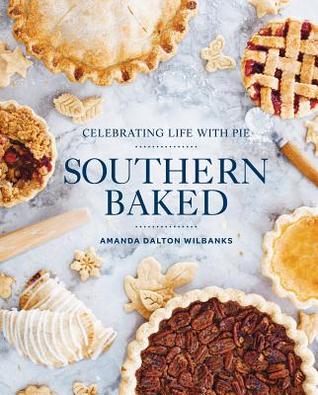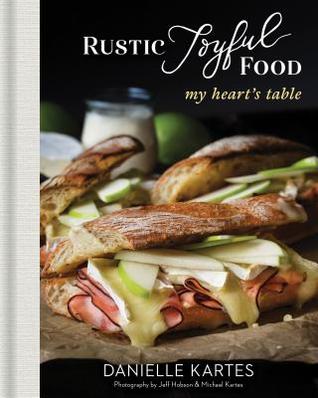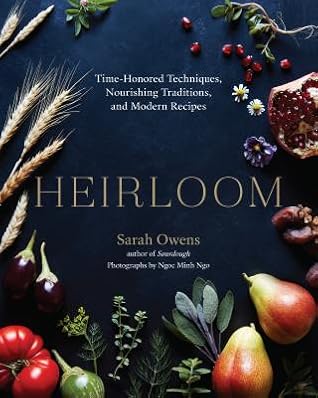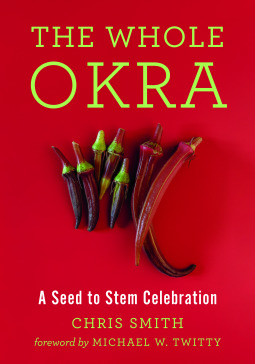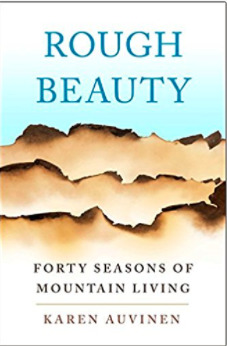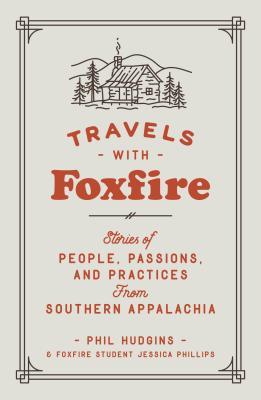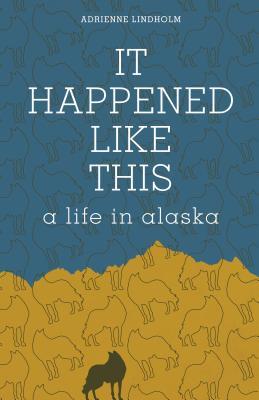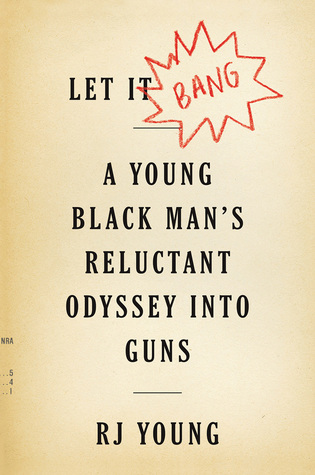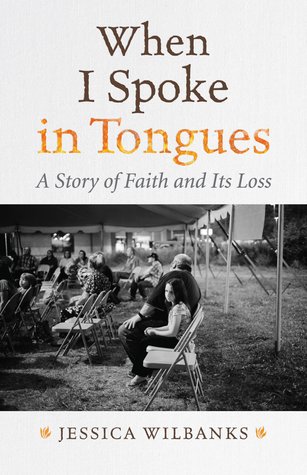Be More RBG: speak truth and dissent with supreme style by Marilyn Easton
This is a quick read that will inspire you to Be More RBG in your daily life. The book is broken down into 5 parts - dare to dissent, change the world, notorious, off the bench, and supreme wisdom. Each section has quotes from Ginsberg and then some tips or ideas of how to incorporate what she's talking about in your own life. Ginsberg is a HUGE role model for women and everyone should try to Be More RBG.
The Good Neighbor: the life and work of Fred Rogers by Maxwell King
Fred Rogers was a pioneer in television programming for children for over 40 years. As the creator and star of public television's Mister Rogers' Neighborhood he helped thousands of children connect with their emotions and learn that they were loved for who they were. Fred Rogers grew up wealthy, but sheltered and often lonely. Because of that he retreated into his world of make believe with puppets and music - both of which would help him create the beloved Mister Rogers' Neighborhood. Throughout his career Rogers would testify before Congress about the importance of public television and its funding, write several books and operas, create non-profits, and influence adults and children alike. Almost everyone he interacted with became a close friend and his dedication to friends and family were legendary - he never forgot birthdays or holidays and even in his last days worked out what gifts he wanted to leave to all his close friends. Many people who never met Rogers wondered if the Mister Rogers on TV was a persona, but everyone who knew him commented that he WAS Mister Rogers - quiet, patient, thoughtful, and caring. Rogers became a cultural icon and even today more than 16 years after his death people still quote him and re-watch episodes of Mister Rogers' Neighborhood. This is a very thorough biography of a wonderful and creative man and his impact on our culture.
Some quotes I liked:
"And he understood that television could give him a unique opportunity to marry his skills in music and entertainment with his interest in children's education. Fred saw that there could be a career opportunity that would blend his aspirations in the more structured field of education with his powerful, more free-form creative instincts. He saw the chance to be both an educator and an artist, and he knew right away that he wanted it." (p. 68)
"Silence - Fred's willingness, as a producer and as a person, to embrace the quiet, inactivity, and empty space - and his calm demeanor were completely unexpected in the television of the 1970s. They were qualities that captivated children and their parents." (p. 194)
[A memorable meeting between Rogers and a fan] "...a twelve-year-old boy who was autistic: 'I tried to get as much information from the family as I could so Fred had an idea of what their problems were. This was a mother and father, and the autistic boy was, I think, the oldest of three. He had a sister, and he also had a younger brother, all of whom, they claimed, had never heard him speak...Fred, when he came out to visit with the family, had the King and Queen puppets on his hands, and he started talking to the family, and he finally got to the boy, who was almost as tall as Fred at that point. The child started speaking in full sentences to the King and Queen. Well, I don't know if you can imagine what the family was going through at that point, hearing their son speak for the first time.'...Lynch [Rogers' secretary] rushed upstairs to get the family their own King and Queen puppets from Rogers's office." (p. 224-5)
"Academics who've studied Rogers's work often marvel at how young children calm down, pay attention, and learn so much from this television production - and at how they remain calm and centered for some time after watching the Neighborhood. Rogers himself put great care into the pacing of the program to help children slow down and steady themselves." (p. 245)

Varina by Charles Frazier (Evening Edition book club)
When Varina Howell agrees to marry much older widower, Jefferson Davis, she expects to have a more secure life than the one she had for the first seventeen years of her life. Davis's family owns land in Mississippi and she expects to live her life there. But, when Davis decides to pursue a career in politics Varina follows him to DC and enjoys life there very much. Until Davis is appointed the president of the Confederacy, then Varina's life changes drastically, often daily. Eventually forced to flee Richmond once the war is over, Varina only hopes to save her children from whatever fate she and Jefferson face. Told back and forth through time as Varina recounts her life history, we see what her relationship with Jefferson was like and how she survived after the Confederacy fell.
I didn't love this book and Varina is not very likable at first. She did grow on me a little as you see glimpses of her character throughout her story. In my opinion, the book is somewhat over-written and overly sentimental and descriptive. But, the main point that shines through is that no one wins when it comes to war and the Civil War was brutal for almost everyone at that time. No matter the side in the end everyone was barely scraping by and trying their best to just survive. It will be interesting to see what my book club thinks of this one.

Rachel Ray 50: memories and meals from a sweet and savory life by Rachel Ray
I was never a huge follower of Rachael Ray, but she always seemed down to earth and approachable. I also liked that she didn't have children and was unapologetic about it. As someone who is childfree by choice I'm always on the lookout for other childfree people out there. This book was half memoir/essays and half recipes. Each chapter starts with a personal essay - some are about her and some are about other people who shaped her life - then there are a few recipes that correspond to that person or time period of her life. All of the chapters are divided into three categories - family, friends, and work. There are some funny stories and some heartwarming ones and lots of recipes that look amazing. I was super impressed that she keeps separate notebooks for recipes - ones for work, ones for personal/at home cooking, etc. I also loved the copies of her notebook pages on the inside covers of the book. I am also someone who still needs to write things down and loves a good list. Overall, it was an interesting collection of essays and recipes from Rachel Ray to celebrate her first 50 years.

Dirt to Soil: one family's journey into regenerative agriculture by Gabe Brown
When Gabe Brown and his wife first started farming they took over her family's farm. In the beginning Gabe did everything the "traditional/industrial" way his father-in-law taught him. But, the first four years after taking over were a series of disasters. On the brink of financial ruin, Gabe started thinking outside the box - initially just to save money. But, once he started to see how no-till and cover cropping helped not just his bottom line financially, but in the output of the crops he was hooked. He started researching regenerative agriculture and trying to incorporate ways to make his farm healthier - both financially and the health of his crops and animals. In Dirt to Soil Gabe shares his story, both the good decisions and the failures they learned from. Often failure is what helps the most if you're willing to be open-minded and learn from it. While this book is pretty detailed in the soil health aspect, there are things that are applicable even if you're just trying to grow your own food in a backyard garden and not farming for profit/career. Gabe reminds me a lot of Joel Salatin - another lunatic farmer who is embracing the counter-culture, unorthodox lifestyle.
Some quotes I liked:
"First, I realized that I had come to accept the degraded condition of our ranch as normal. Instead of reversing the degraded conditions, I had been trying to hang on not let things become worse. I was trying to sustain the operation in a poor state of health, not help it recover and improve. I know sustainable is a popular buzzword today. Everybody wants to be sustainable. But my question is: Why in the world would we want to sustain a degraded resource? We instead need to work on regenerating our ecosystems." (p. 24)
"The fusion of life transforms dirt into soil. Dirt becomes soil not simply because there is enough organic matter in the soil but because there's life if the soil - and not just any life but the full spectrum of soil biology. As Ray likes to say, without life we might as well be farming on the moon." (p. 50)
"The best thing about raising hogs, other than the bacon and pork chops, is the economic return. Our hogs finish in seven months and provide superior meat quality. Per dollar invested, on our operation, hogs are second only to honey." (p. 90)
"The owner of the apiary [who provides the honeybees for Gabe] told us that the hives placed on our property yield 19 percent more honey as compared to the hives placed on other properties. I see this high yield as proof of the diversity and health of our ecosystem. We pay them a fair price, thus helping support a local business. Then we sell the honey to our customers at a small profit. It's a win-win situation for all involved, including the bees!" (p. 103)
"He [Jack Stahl] considers the use of GMOs to be an act of arrogance, as well. 'Over the long run, you can't manipulate nature and win. It will always have the final word.'" (p. 157)
"The US government has propagated this mindset with its cheap food policy. It wants to ensure that citizens have an abundant supply of cheap food. Notice I did not say nutrient-dense food. The United States spends more on health care than any other country in the world, and yet, its citizens are not healthy. Are farmers and ranchers to blame for all this? No, not entirely, but we need to take our fair share of the blame. The American public needs to take their part of the blame, as well, for allowing this to happen. Through their buying dollars, consumers have made the choice that they want this system, even as they choose to ignore the environmental degradation, the mistreatment of animals, and the overall decline in human health. And think of what else this production model has caused. It has led to tighter and tighter margins for producers. Lower margins mean producers must farm more and more land to make ends meet. Farm sizes increase, leaving fewer farms overall and fewer people operating the land. In other words, this production model has also lead to the decline of many of our small towns." (p. 177)
"In 2002, the Journal of the American Medical Association concluded that diet alone, sourced from the conventional production model, could no longer supply adequate amounts of nutrients and advised all adults to take one multivitamin per day, reversing a long-standing position. The sales of supplements have since grown into a $30 billion-a-year industry." (p. 185)
"Once, when I was speaking to a large crowd of corn and soybean producers in Nebraska, I asked how many of them made a profit on their corn the previous year. One person raised his hand. Yes only one. I asked how many planned on planting corn the following year. Every hand went up. This is an example of how entrenched people are in today's production model." (p. 190)

The Truth Will Set You Free, But First It Will Piss You Off! by Gloria Steinem
Gloria Steinem is an icon, so lots of things that she's said over the years have been re-quoted over and over. In this book Steinem collects some of her most famous quotes on several different topics. The book is divided into 6 chapters - Families Born and Chosen, Changing Aging, Work is Not a Four-Letter Word, Among Co-conspirators and Adversaries, Laughing Our Way to the Revolution, and In the Street. Each chapter has a few pages written by Steinem about that topic and then there are several pages of quotes. The last page of each chapter has quotes from other feminist women that pertain to that chapter's topic. This is a short, quick read that you could probably read in one sitting. Steinem is always inspiring and this book is a collection of all her inspiring highlights. Overall, a great feminist book!
As this is a book of quotes, of course there were several that I loved:
"For instance, in Sex and World Peace, Valerie Hudson and other scholars conducted a study of violence in a hundred nations around the world. The single biggest determinant of whether a nation would be violent, both in its own streets and in military violence against another country, was domestic violence in the home. More than poverty, access to natural resources, religion, or even degree of democracy, they found that violence against females was the indicator and normalizer of all other violence." (p. 9)
"Democracy begins with owning our bodies. By that measure, women have rarely lived in a democracy." (p. 23)
"Women are not going to be equal outside the home until men are equal inside it." (p. 32)
"We are all engaged in the task of peeling off the false selves, the programmed selves, the selves created by our families, our cultures, our religions." - Anais Nin (p. 53)
"Prostitution isn't the oldest profession, it's the oldest oppression." (p. 67)
"Not one study has proved that women talk more than men, but numerous studies indicate that men talk more than women. Women are thought to be more talkative than men because they are being measured against the expectation of female silence." (p. 95)
"The first resistance to social change is to say: It's not necessary." (p. 99)
"A woman who aspires to be something will be called a bitch." (p. 109)
"So use laughter as a guide:
- Try to stay away from places where you're not allowed to laugh, including religious ones. The absence of laughter is a giveaway that the religion in question is more political than spiritual, more about a hierarchy with God at the top than about godliness in all living things.
- Try to stay away from workplaces where laughter is absent. The degree of freedom where you work is indicated by the presence or absence of laughter.
- Try to stay away from social settings with no laughter. Your ability to laugh is a sign that you're doing the right thing with the right people in the right place. Laughing together creates instant community." (p. 122-23)

Eat Joy: stories and comfort food from 31 celebrated writers by Natalie Eve Garrett, ed.
This was a really quick read. Stories about comfort food with a recipe included at the end of each story. The stories were divided into 4 categories - Growing Pains, Loss, Healing, and Homecoming. My favorite one was the story by Anthony Doerr, but there were several really good ones I liked. It's interesting to think about how much food ties into comfort and how comfort can be for something bad or to celebrate something good. Overall, a good, quick read that made me think about my own comfort food and how much cooking is tied to love.
Together: a memoir of a marriage and a medical mishap by Judy Goldman
Judy Goldman's husband Henry suffered from back issues for many years - even having to retire early from his ophthalmology practice because of it. So when he reads an article about epidural shots to relieve back pain he's very interested. The shots are in two parts and after the first part he experiences some numbness in one of his legs, but they don't think much of it. But, after the second shot both of Henry's legs are numb and he can't feel anything from the waist down. The doctor who gave him both shots is less than helpful and doesn't have an explanation. The next several months to a year is an ordeal as they try to figure out if Henry will get any use of his legs back. Judy always saw herself as the meeker partner, but now she has to step up to make sure Henry gets the care he needs. Judy tells the story of Henry's "medical mishap" and how that situation highlighted some of the strengths and challenges of their marriage. She does a good job of blending their personal history with the story of the "medical mishap" and how they dealt with it and worked to move on with their lives.

The Little Book of Bob: life lessons from a street-wise cat by James Bowen
This is a quick read that would make a great holiday gift for a cat lover or Bob fan. In The Little Book of Bob James Bowen recounts some of the life lessons he's learned from having Bob the cat in his life. The book's stories are organized into 6 sections - lessons in friendship, what we need to be happy, how to get the most out of life, how to survive all that life throws at us, how to be good to ourselves, and lessons in day-to-day life. Each section has a few stories about James and Bob that highlight that section's theme. A quick, uplifting read.
One quote I really liked:
"Boats don't sink because of the water around them. Boats sink because of the water that gets into them. Bob seems to have the gift of not allowing what happens around him to get inside him. He merely sails serenely on." (p. 103)
Southern Women: more than 100 stories of innovators, artists, and icons by the editors of Garden & Gun
I love Garden & Gun magazine and the books they publish are always great, so I was really looking forward to Southern Women and it did not disappoint. Organized into seven categories, performers & players, chefs & mixologists, innovators & iconoclasts, artists & artisans, singers & songwriters, writers & readers, and tastemakers & trendsetters, 123 Southern women are highlighted. Some are well-known names like Oprah Winfrey and Dolly Parton, but I liked that Garden & Gun chose to highlight some newer faces that are already making a name for themselves in various industries in the South. A great collection of stories about women that show all the diversity and drive women have in the South, both in the past and present.

